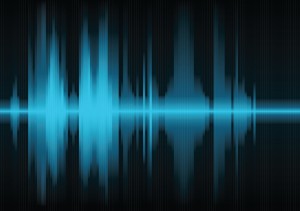
After years of listening to the same iTunes playlists and stale talk radio programs, I finally moved the purple podcast app on my iPhone from my “useless” folder (where Safari, Game Center, Compass and Apple Maps still live) onto my home screen. In the last year, that app has become one of my most-used.
“This Week in Tech” usually kicks off my work week, because you can’t work in tech PR and be unaware of what’s going on in the tech world. Midweek, I’ll tap into the Grantland network for deep dives into sports and pop culture. “99% Invisible” gives me a look at the most fascinating elements of design and architecture (Ikea Hacking, anyone?). By the time Friday rolls around, I’m usually left with NPR’s “All Songs Considered,” Slate’s “Political Gabfest” and Harvard Business Review’s “HBR IdeaCast” – whatever else I missed.
I’m hardly the only one who appreciates the podcast medium this much. More than one in four Internet users listen to podcasts, up from about one in 14 back in 2006. That number should continue to climb, as podcasting takes its rightful place next to blogs, ebooks, infographics and videos as valuable content marketing tools.
Audiences are ready to support podcasts. If you commute, if you own a pair of earbuds and/or if you’ve found it impossible to read a book while you’re driving, then podcasts are for you.
But it wasn’t always that way.
A Look Back
The first podcast aired on August 13, 2004, when Adam Curry – the “Podfather” – launched the Daily Source Code. One look at the tagline – “Where developers and users party together” – should tell you it wasn’t really a big tent podcast. Certainly not for everyone.
Nevertheless, many saw potential for the podcast medium to grow. As Wired wrote a decade ago about this new form of broadcasting, podcasts combine “the hyperactive talkiness of blogs and the hipness of iPods into something utterly new.”
Predictions for podcasts were bold. Early podcaster Bob Garfield thought podcasting could be a training ground or minor league system for broadcast talent. He told Wired, “It’s likely that podcasting will bring hitherto obscure or nonexistent broadcasters to the fore, and some genius will be discovered.” Others just saw podcasting as another way for broadcasters to avoid the long arm of the FCC.
Since then, and after years of jump-the-gun reports that podcasting has gone mainstream, it’s safe to say that it’s finally made it. Gone are the days when you’d need an iPod to listen to your favorite program. Smart phones, found in the pockets and purses of more than half of Americans, are now the device of choice.
Just last summer, Apple announced that the iTunes Store had crossed 1 billion podcast subscriptions. And the topics have become broader too. These days, podcast hosts are no longer just hobbyists, nerds or audiophiles with good equipment.
The Missing Marketing Channel?
Given how many fans the podcast medium has picked up over the years, you’d think marketers would have flooded iTunes and Stitcher with an endless amount of on-demand audio. Yet, somehow, only 6 percent of marketers podcast.
Even here at March, we can’t count ourselves among that percentage, although we are planning to take the podcast plunge soon, with the launch of the PR Nonsense podcast. We think there’s truth to the comments of “The Human Business Way” podcast host Chris Brogan, who said, “It’s a pretty open space right now because companies aren’t rushing in and figuring it out.”
The easiest way to think about the value of podcasts is in the amount of time they keep an audience’s attention. A blog post might take a reader a few minutes to read. Same thing with a video. But a podcast can keep a listener’s attention for anywhere from 20 minutes to a full hour!
Is there a better example of long-form content marketing that builds intense brand loyalty? To again use myself as an example, I’m awake, and not working, for roughly eight hours every day, and I choose to spend one to two of those hours (basically) eavesdropping on the same five or 10 people having conversations with themselves – and they’re conversations I can’t even participate in!
The appeal of podcasts is that they empower listeners, giving them complete control over consumption. A podcast is essentially a personal, on-demand radio show that lives in your pocket and can be listened to and fast-forwarded through whenever the listener wants. You can always pick and choose the shows and episodes that are most relevant to your interests, and ignore the ones that aren’t.
But even then, the truly great podcasts are the ones that listeners will tune in for even when the topic doesn’t interest them. That could explain why I found myself listening to a Grantland podcast earlier this week featuring an actor from FOX’s “New Girl” – a show I’ve probably watched three times.
Imagine if your blog could keep readers’ attention for a full hour, even when the topic doesn’t interest them. It probably wouldn’t happen. But it can happen with podcasts, and that’s why they’re so appealing to content marketers.
Want to learn more about building an effective PR message? In The Evolution of PR, Content Marketing and Blogging, we cover:
– The ongoing changes in the world of PR
– The principles of content marketing for tech companies
– Important blogging strategies
– How to use press releases for more than just brand-building
